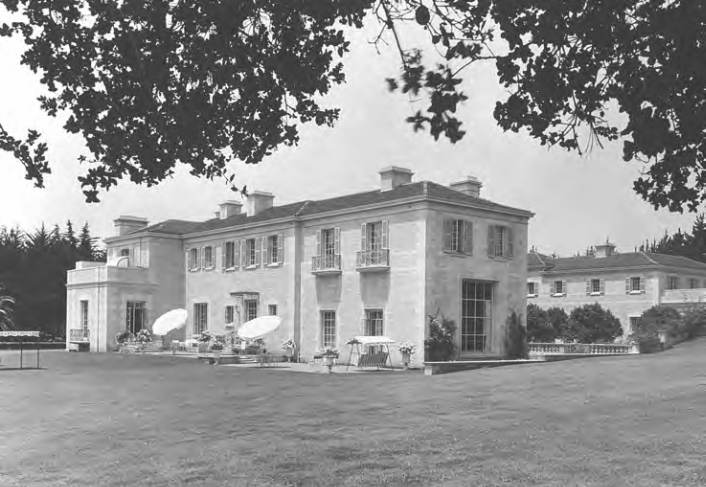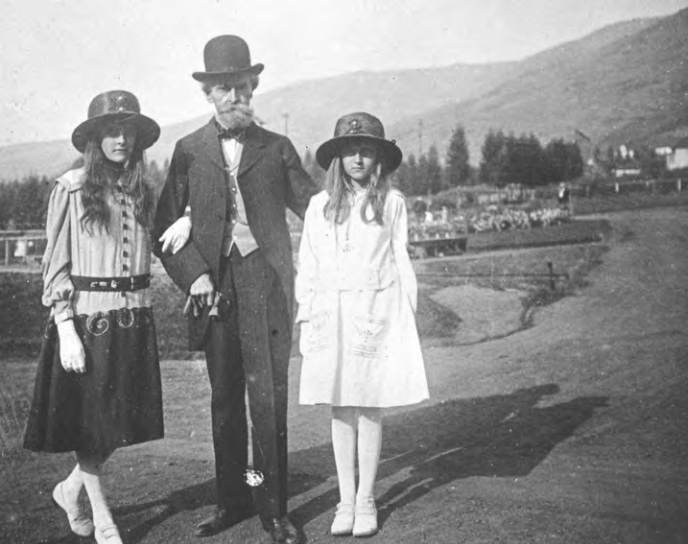Basic HTML Version


34
winter
|
spr ing
Montana, Clark created the Western Lumber Company and obtained a
monopoly on electricity in the area.
In 1900, hoping to control the cost of transportation, he joined
his Los Angeles-based brother, J. Ross Clark, in forming the San Pedro,
Los Angeles and Salt Lake Railroad to provide a crucial link for Clark’s
Montana mines. The brothers found they were in competition with E.H.
Harriman, owner of the Union Pacific Railroad. The two companies raced
to lay track and secure rights of way. Clark managed to buy two ranches,
the Stewart and Keil ranches in the Las Vegas Valley, before Harriman
could obtain the land.
When the two rail crews met just north of Las Vegas, trouble was
brewing. The Clarks and Harriman settled their dispute when they
agreed that Clark would operate the railroad in exchange for giving
Harriman a 50% share. Completed in 1905, this railroad is mainly
responsible for the creation of the town of Las Vegas. Here, too, Clark
built several blocks of cottages for his workers. By 1911, one-third of Las
Vegas’s population worked for Clark’s railroad and Nevada’s legislators
named the county for him.
Living the High Life
William A. and Kate Stauffer Clark had six children. Kate died
in 1893 and two years later, Clark became entranced with 17-year-old
Anna Eugenia La Chappelle who represented
Goddess Liberty
at the Butte
Independence Day celebration. Anna’s roots were French-Canadian and
her doctor father had brought the family to “The Richest Hill on Earth”
hoping to make a livelihood. When he died suddenly, Clark gave financial
assistance to the family and made Anna his ward. He supported her education
in music school in the East and in France.
In 1904, to the surprise and shock of friends and family, he announced
that he and Anna had married in France in 1901 and had a two-year-old
daughter who was born in Spain, Louise Amelia Andrée Clark. Continuing to
live and travel abroad, the couple’s second daughter, Huguette Marcelle Clark,
was born in Paris in 1906.
In 1885, Clark had commissioned the construction of a grand Fifth
Anna E. Clark commissioned Reginald Johnson to design the second
Bellosguardo
in
1932 (Courtesy of Santa Barbara Historical Museum)
(Left to right) Andrée, William A., and Huguette Clark at Columbia Gardens in Butte,
Montana, circa 1917 (Montana Historical Society Research Center)
Avenue mansion on the corner of 77
th
Street. Thirteen years in the building, the
120-room edifice rose nine stories and boasted an orgy of decorative elements.
Turkish baths, Greek columns, medieval tapestries, carved ceilings whose wood
came from Sherwood Forest, marble fireplaces, a Gothic library and four art
galleries lived inharmoniously within the gargantuan structure. According to
T. Miller, author of “The Lost 1908 William A. Clark Mansion,” New Yorkers
hated it. They called it “an old man’s fad,” saying it was “too big, too heavy, too
massive for its ground space and its residential surroundings.” In other words, it
was in bad taste.
Nevertheless, Clark and his new family moved in and joined the social
scene in New York. In 1917, tragedy struck the family when Andrée died
of meningitis. In 1923, a new chapter began for the Clarks when William
purchased an
estate in Santa Barbara as a winter retreat. William didn’t enjoy
his new home very long, though, for he died of pneumonia in 1925 at age 86
at his Fifth Avenue mansion.
Considered to be one of the 50 richest men in America at the time of his

